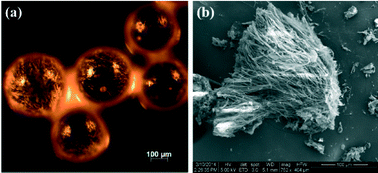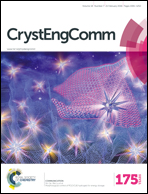Polymorphism of vanillin revisited: the discovery and selective crystallization of a rare crystal structure†
Abstract
While polymer induced heterogeneous nucleation (PIHn) has been shown to be a powerful tool for crystallization control and polymorph screening the factors influencing PIHn, such as solvent selection, supersaturation and method of crystallization are not well understood. Herein, we report on the use of PIHn to selectively crystallize a new and rare crystal structure of vanillin. Nearly 65 years ago, Walter McCrone postulated vanillin to be trimorphic. However, only one crystal form, Form I, had been structurally characterized to this point. Form II crystallizes in the space group Pna21 with four molecules in the asymmetric unit. Achiral molecules exhibiting such crystal structures account for less than 0.008% of all organic entries in the Cambridge Structural Database. Polymorphic control by PIHn was observed to be highly dependent on the method of crystallization. In the presence of poly(acrylic acid) and poly(methyl methacrylate) micro-particles the thermodynamically stable Form I was crystallized from isopropanol by quench cooling, while metastable Form II was obtained by slow evaporation. To our knowledge this is the first deliberate study to highlight the influence of crystallization method on PIHn.

- This article is part of the themed collection: Editor’s Collection: Polymorphism in Molecular Crystals

 Please wait while we load your content...
Please wait while we load your content...